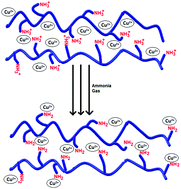Synthesis, classification and properties of hydrogels: their applications in drug delivery and agriculture
Abstract
Absorbent polymers or hydrogel polymer materials have an enhanced water retention capacity and are widely used in agriculture and medicine. The controlled release of bioactive molecules (especially drug proteins) by hydrogels and the encapsulation of living cells are some of the active areas of drug discovery research. Hydrogel-based delivery systems may result in a therapeutically advantageous outcome for drug delivery. They can provide various sequential therapeutic agents including macromolecular drugs, small molecule drugs, and cells to control the release of molecules. Due to their controllable degradability, ability to protect unstable drugs from degradation and flexible physical properties, hydrogels can be used as a platform in which various chemical and physical interactions with encapsulated drugs for controlled release in the system can be studied. Practically, hydrogels that possess biodegradable properties have aroused greater interest in drug delivery systems. The original three-dimensional structure gets broken down into non-toxic substances, thus confirming the excellent biocompatibility of the gel. Chemical crosslinking is a resource-rich method for forming hydrogels with excellent mechanical strength. But in some cases the crosslinker used in the synthesis of the hydrogels may cause some toxicity. However, the physically cross-linked hydrogel preparative method is an alternative solution to overcome the toxicity of cross-linkers. Hydrogels that are responsive to stimuli formed from various natural and synthetic polymers can show significant changes in their properties under external stimuli such as temperature, pH, light, ion changes, and redox potential. Stimulus-responsive hydrogels have a wider range of applications in biomedicine including drug delivery, gene delivery and tissue regeneration. Stimulus-responsive hydrogels loaded with multiple drugs show controlled and sustained drug release and can act as drug carriers. By integrating stimulus-responsive hydrogels, such as those with improved thermal responsiveness, pH responsiveness and dual responsiveness, into textile materials, advanced functions can be imparted to the textile materials, thereby improving the moisture and water retention performance, environmental responsiveness, aesthetic appeal, display and comfort of textiles. This review explores the stimuli-responsive hydrogels in drug delivery systems and examines super adsorbent hydrogels and their application in the field of agriculture.

- This article is part of the themed collection: Journal of Materials Chemistry B Recent Review Articles


 Please wait while we load your content...
Please wait while we load your content...